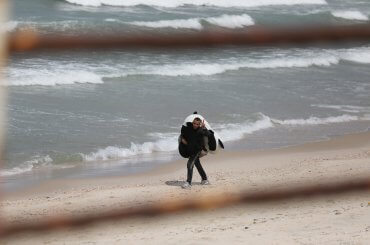For months I have been getting similar questions from friends and family all over the world: what’s it like living in Palestine during the coronavirus pandemic?
And from the beginning of the pandemic until now, my answer to that question has constantly changed and evolved.
It’s a phenomenon that I think can be shared by people from across the globe, and within Palestine as well: what started off as feelings of fear and panic, soon sunk into dread and anxiety, frustration with and eventually acceptance of our current reality, and now just overall “pandemic fatigue.”
It goes without saying that my experience as a foreigner living in Palestine will always be different than locals, but from what I have witnessed, there is a strong sense within the community of very much just wanting to get on with life.
Even during the peak of the virus’ second wave in Palestine, which took place over the summer and saw up to 1,000 cases in a single day, businesses stayed open, people went to work, and tried to continue on with their lives as much as they could.
Now as we’re nearly half way through October, life continues to press on. Despite the fact that more and more people that I know personally have gotten the virus in the past two months than at any other time during the pandemic, the sheer fear and panic surrounding the virus has seemed to fade.
Of course, it goes without saying that life in Palestine is complicated by much more than the coronavirus, and continues to be affected each day by the Israeli occupation — something Palestinians have witnessed over the past few days as we’ve seen a spike in settler attacks on Palestinians during the olive harvest,
Currently, when it comes to the virus, on any given day, the Palestinian Ministry of Health reports anywhere around 300+ new cases of the virus across the West Bank, Gaza, and East Jerusalem. At the same time, however, the number of recovering cases are almost always close behind.
On Monday, the MOH reported 395 new cases and 312 recovered cases in 24 hours, along with 10 virus-related deaths, mostly among the older population.
As of Tuesday the total number of recorded COVID-19 cases in the oPt since March stood at 55,951. Of those cases, 48,719 were reportedly in recovery, meaning that there are just over 7,000 cases of the virus among a combined population of less than 5.5 million people.
The very real possibility remains that the low rates of infection in Palestine can be attributed to the fact that the Palestinian MOH does not conduct tests anywhere near the testing rate of Israel, for example.
On top of the ever present threat of COVID-19, Palestinian health officials have began a campaign encouraging citizens to get their flu vaccines, and raising awareness over the difference in symptoms between the seasonal flu and the coronavirus.
For now, Palestinians are trying to enjoy the cooling temperatures and beauty of things like the olive harvest as much as they can, before another spike in the coronavirus, flu, or any other unforeseen challenges that 2020 is sure to throw this way.


